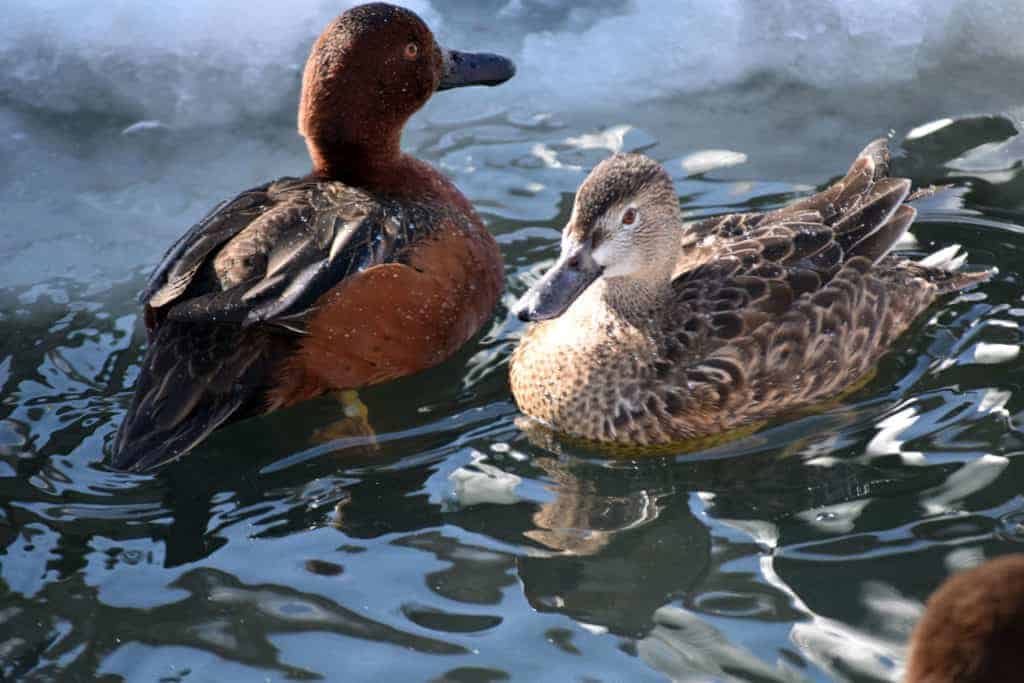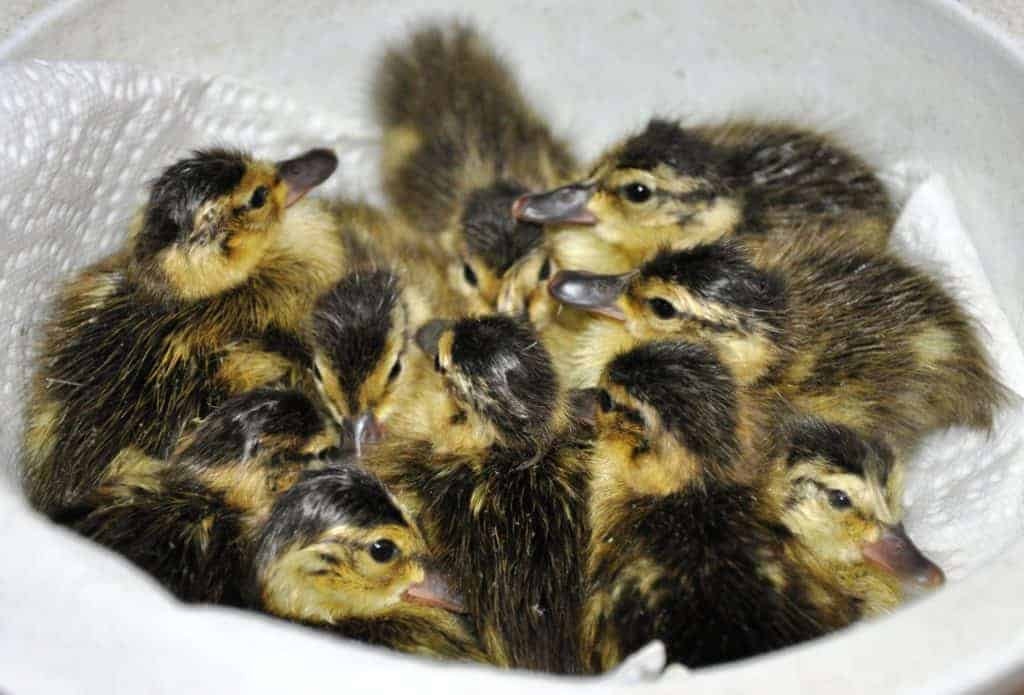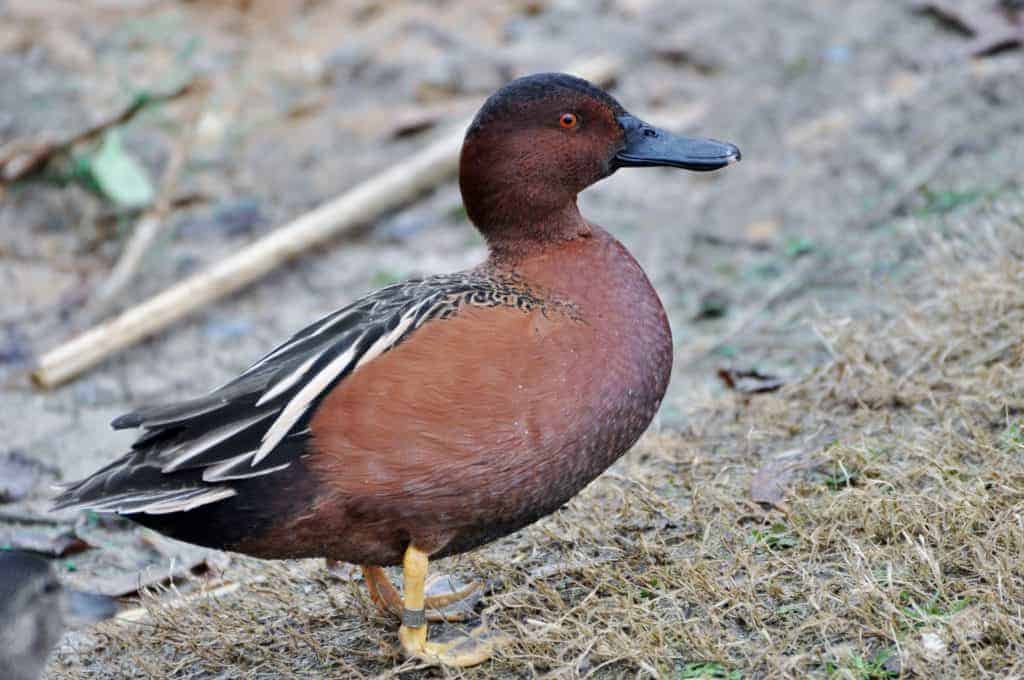Cinnamon Teal

Five subspecies are recognised:
- S. c. septentrionalium – of North America
- S. c. tropica – of north-west Colombia
- S. c. borreroi – of eastern Colombia, not recorded since 1950, possibly extinct
- S. c. orinoma – of northern South America
- S. c. cyanoptera – of southern South America and the Falkland Islands
Spatula cyanoptera
Handsome and shiny, dark coppery-red, the Cinnamon Teal is an inhabitant of the western hemisphere exclusively, with well-established populations in North and South America. North American individuals are all of a common subspecies, the Northern, but in South America, 4 other distinct subspecies have been identified, one of which may be extinct. Generally, they inhabit the west coast areas of both continents, with some migration and local movements. Cinnamon Teal may interbreed with their close relative, the Blue–winged Teal. The females are very similar in appearance: Cinnamon have a slightly longer bill, a little narrower and lighter in colour. Overall, it is slightly warmer in colour than the slightly greyish Blue-winged, though this is difficult to determine unless both can be compared.
Cinnamon Teal are omnivorous, eating molluscs, insects and emergent vegetation. Like other dabbling ducks, they will feed at the surface and subsurface by upending.

In captivity, Cinnamon Teal are well established, nearly all are the North American subspecies. They breed readily, and will utilize various nest sites, in vegetation or nest boxes. They do very well in a mixed species aviary as they are not overly aggressive to other species, even during nesting. Just be mindful of the possible hybridisation with the Blue-winged.

Males and females pair off at the end of winter going into spring, as part of bigger flocks. They select a nest site, often well-concealed in vegetation. Fallen herbage forming tunnels is favoured for entry and exit to the nest. There, she will lay clutches of 4-10 eggs, and incubate for about 24 days. Males do not typically engage in rearing young.